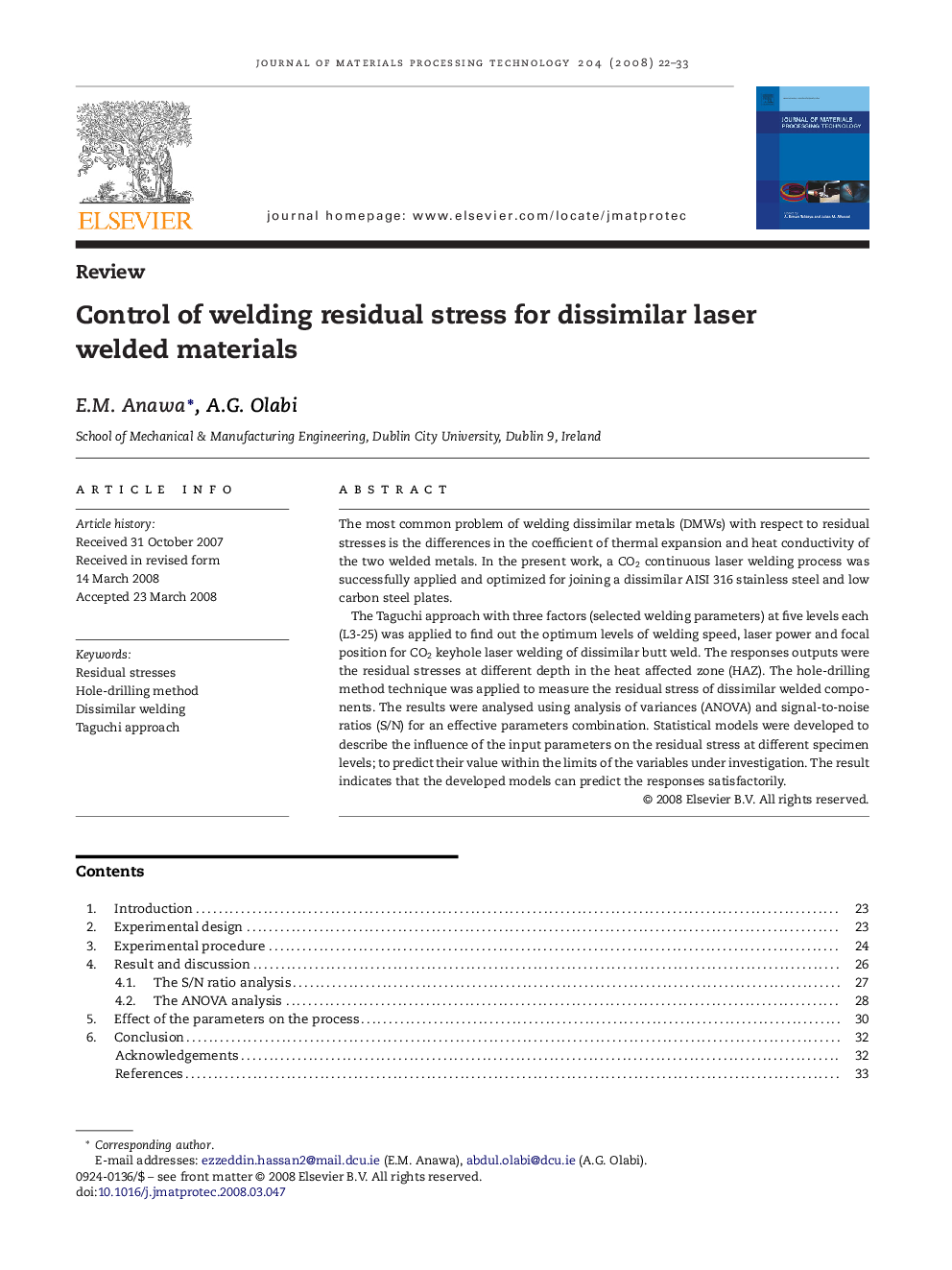| کد مقاله | کد نشریه | سال انتشار | مقاله انگلیسی | نسخه تمام متن |
|---|---|---|---|---|
| 793665 | 1466762 | 2008 | 12 صفحه PDF | دانلود رایگان |

The most common problem of welding dissimilar metals (DMWs) with respect to residual stresses is the differences in the coefficient of thermal expansion and heat conductivity of the two welded metals. In the present work, a CO2 continuous laser welding process was successfully applied and optimized for joining a dissimilar AISI 316 stainless steel and low carbon steel plates.The Taguchi approach with three factors (selected welding parameters) at five levels each (L3-25) was applied to find out the optimum levels of welding speed, laser power and focal position for CO2 keyhole laser welding of dissimilar butt weld. The responses outputs were the residual stresses at different depth in the heat affected zone (HAZ). The hole-drilling method technique was applied to measure the residual stress of dissimilar welded components. The results were analysed using analysis of variances (ANOVA) and signal-to-noise ratios (S/N) for an effective parameters combination. Statistical models were developed to describe the influence of the input parameters on the residual stress at different specimen levels; to predict their value within the limits of the variables under investigation. The result indicates that the developed models can predict the responses satisfactorily.
Journal: Journal of Materials Processing Technology - Volume 204, Issues 1–3, 11 August 2008, Pages 22–33